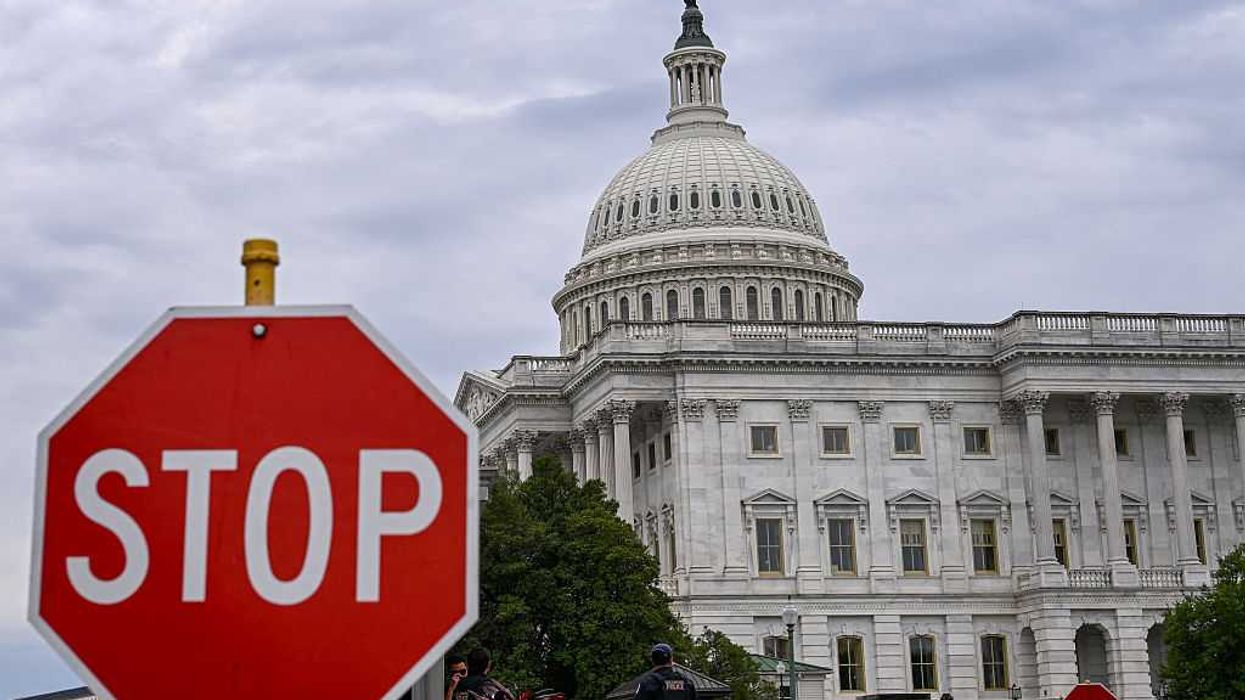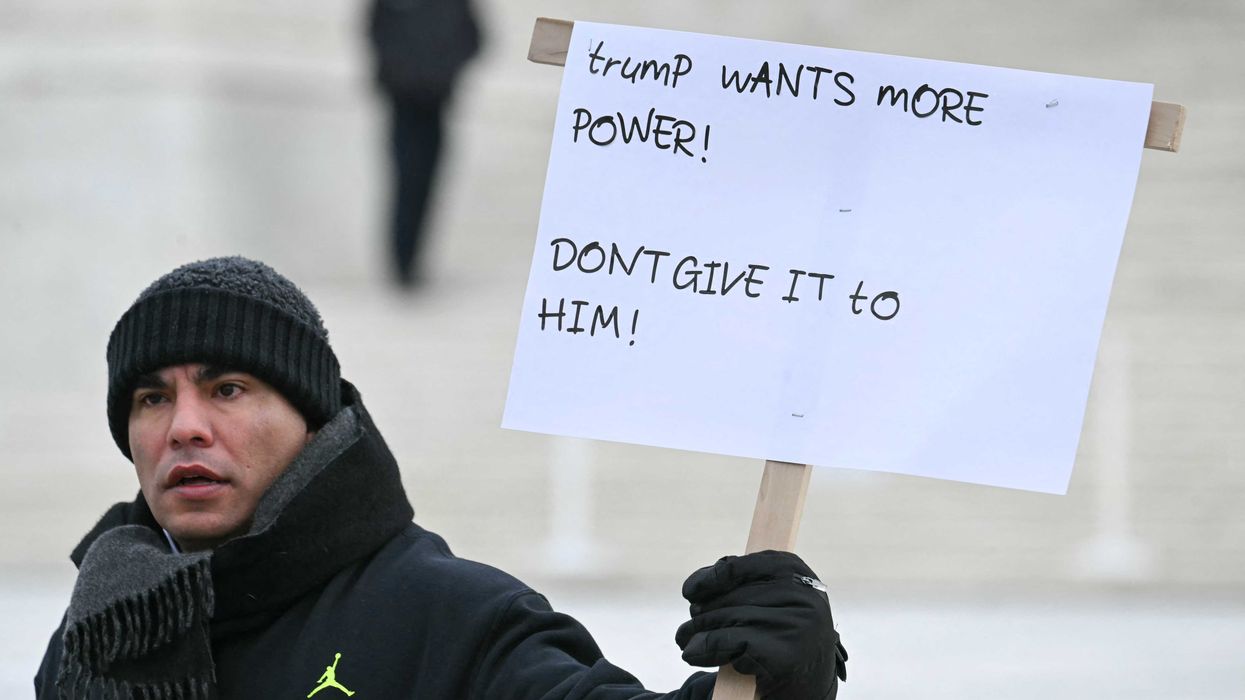GLENN: I don't know if you know this, but it is May the 4th. May the 4th be with you. I'm just saying.
STU: Yeah.
GLENN: And huge star war fans, and we were talking in the break about May the 4th. And if you look at what George Lucas did at that time, it was crazy. 1970s, you have to put yourself back into that. 56,000 people just died in Vietnam, and then you have Watergate, you have the communist, Marxist, radicals, it felt very much like today. Except, I think in some ways worse. You had the complete collapse of faith in America. You had the collapse of the faith in the dollar, in the military, Watergate was happening, inflation, gas shortages. And then if you look at the -- if you look at the movies, it was One Who Flew Over the Cuckoos Nest, Clockwork Orange, Taxi Driver. Good heavens, man.
PAT: Not exactly Disney movies.
GLENN: No. French Connection, Dog Day Afternoon. Here was the happy point in the 1970s in the movie theater. It sounded a little like this:
[Jaws music]
That was, oh, what a relatable movie. I see ourselves in that getting eaten by a shark. So when he came out in the mid-'70s, and he decided to do Star Wars, nobody was interested in this. Here he is in California, he grew up in Modesto, California, George Lucas. And his childhood hero in the movie theater was Flash Gordon. And so when he heads off into Southern California to go to film school to USC, he has this Flash Gordon kind of thing. He produces a film called THX 1138. And I don't know if you guys have seen -- have you ever seen clips of it? It's actually not so bad.
PAT: It's a little weird.
GLENN: It's a little weird. But he -- you know, he develops it into a full length feature, it wins in college, and then he develops a full link feature and everybody in the movie studio hates it. And they actually demand their $300,000 back that he put up -- or that they put up front.
STU: Does that work? Are you --
GLENN: Yeah, no, I don't know. But they're, like, that's so bad, we want our money back. So he's friends with Francis Coppola.
PAT: He's the only one who liked the movie.
GLENN: Right. It's Coppola. But before Coppola is Coppola. But he's, like, dude, you've got something. You just have to go for it. But break out of your darkness and the darkness that's around, and he challenges him to do something lighthearted and something pure American and relatable to the American people. So he comes up with American Graffiti.
VOICE: The film was shot in just 28 days for under a million dollars.
PAT: Wow.
GLENN: 28 days. A million dollars.
PAT: Unbelievable.
GLENN: And I don't think people really understand -- I don't think people really understand what that -- I mean, that turned into Happy Days.
JEFFY: Yeah, that was a classic.
GLENN: That changed the 1970s.
JEFFY: Sure did.
GLENN: American Graffiti all of a sudden Ron Howard is huge.
VOICE: Most successful science fiction at that point was 2001. And successful then was that it made about $24 million or something like that. Most hit science fiction films would make about $16 million, which was the planet of the Aprils films and that sort of thing. But most science fiction films would make under $10 million. There's no reason to think that it would do something different.
PAT: Totally different time.
GLENN: So, American Graffiti is released, and he had already been talking to the movie companies, universal studios, united artist, and they looked at his space opera Star Wars, and they all said nNo, thank you. And so they pass. The American Graffiti goes out, it's the third highest grossing movie of the year. It brought in over $100 million, which was very rare in the 1970s. Remember, cost him -- what was it? A million dollars?
PAT: Less than a million.
GLENN: Less than a million. Brings in $100 million. All of a sudden he is -- he's knowing now that his passion project is up next.
VOICE: Undaunted. Lucas presented Star Wars to Allen Ladd Jr. the new head of creative affairs at 20th Century Fox. Ladd, a former producer, was able to recognize potential in the filmmaker, if not necessarily the film.
LADD: We had a meeting and George said, well, I didn't think about this thing called Star Wars and told me about it. And I said that sounds terrific. I mean, the technology part of the whole thing was completely over my head. But I just believed in him and his genius. I recognized American Graffiti that he really was a genius, so I just flew with it.
GLENN: And doing some research on Star Wars, it's amazing how much work he put into it. I mean, he met with really brilliant people about mythology. 1974 comes along, and he gets a deal for this space fantasy, this space opera, and he begins to write the screenplay.
VOICE: The filmmaker was able to distill his idea down to its essence. An epic battle between a heroic alliance and a evil galactic empire. The chief villain Darth Vader was there practically from the start. But it took time to come up with Star Wars three main heroes. A plucky young princess, the Korean smuggler and most important the boy whose name was Luke Star killer. He becomes a Jedi knight deriving his energy known as the force. But along the way, the script went through radical changes. At one point, Luke was a 60-year-old general and Han Solo had green skin and gills.
GLENN: It's amazing. He goes back, and he's meeting with these philosophy professors and these professors that study cultures and religion, and they are -- I mean, he's studying the Iliad, and he's looking for what are the mythical stories...he's scouring the world. What do they all have in common? So he starts writing this thing, and it goes way past one movie. And he realizes he has at least three movies in this. And so he decides to -- he doesn't tell anybody. He just takes and cuts them up into three movies, doesn't tell the movie studio I've got two other movies, and he decides I'm just going to make this one movie. So he goes to the Fox studio executives, and before he goes, he gets this really expensive artist to do all of the art work, so it's all in storyboard form. Because he knows nobody has the imagination to see this. Now, in a world where movies now are, you know, $200 million to make, this was, like, $8.5 million to make.
That back in the mid-1970s was a fortune, especially for a guy who had one hit. And $8.5 million, and they didn't have the technology to be able to make any of these scenes. I mean, they're still flying by wire. It would have looked like an old -- a Godzilla movie. So they're, like -- they couldn't -- they knew they couldn't -- that -- he knew the movie executives wouldn't be able to see it. But because he has the success of American Graffiti, he says "Here's what I'm going to do. I'm going to do this. If there's any sequels, doesn't tell him that he's got three already written, if there's any sequels, you know, we'll talk about that later and negotiate. And I tell you what. I'll take less, but I want all of the merchandising. This is before everybody was merchandising. It's like Desi Arnaz saying I want all the reruns. So nobody is merchandising and they're, like, this kid's a moron. All right. We'll do your deal.
VOICE: I was very careful to say I don't want more money, I don't want more points, I don't want anything financial, but I do want the right to make these sequels. I was on the assumption that every filmmaker was that the film would be a disaster and it would die a horrible death, and it would be very hard to get these next two movies made.
LADD: George said I would like a big slice of the merchandising. Up until that time, merchandising had been relatively unknown.
LUCAS: When I took over the licensing, I simply said I'm going to be able to make T-shirts, I'm going to be able to make posters, and I'm going to be able to sell this movie, even though the studio won't. So I managed to take everything that was left over that the studio really didn't care about.
GLENN: So now here's the amazing thing. He doesn't have any money, he barely has anybody's trust, he doesn't have the technology, he starts something called industrial light and magic, he's got no money, he just gets a bunch of people and says get some milk cartons. Can you cut them up and look like a planet? Doing crazy things in the studio. They have to build their own computers. They didn't have stop animation. When we did stop animation here in these studios, you rent these computers that tell -- they track every single shot, so you can go back and look. They didn't have that. They had to build their own computers to be able to do all the tracking shots. I mean, this is crazy to attempt. What I didn't know is there was an argument internally. The movie company said. okay, we're going to let you do this, but you're an unknown. You have to have famous people in it. And he's, like, no, I don't want any famous people in it. The guy the movie studio -- and even George Lucas thought, the guy who tried out, and they thought the whole time was going to be Luke Skywalker -- was it Luke Skywalker or Han Solo?
PAT: Han Solo.
GLENN: Yeah, the guy that was going to be Han Solo was going to be Kurt Russell.
LUCAS: I was very careful to say I don't want more money.
GLENN: Here's the audition.
RUSSELL: I found it. It's just not there.
STU: Oh, my gosh. So weird.
GLENN: It's crazy. We're looking at all of these original tapes. Do you know who's going to play Princess Leia. It was going to be Cindy Williams from LaVerne and Shirley.
PAT: How weird is that?
GLENN: Crazy. Just crazy.
PAT: Before Mark Hamell, they were talking about -- does anybody remember even the Greatest American Hero?
GLENN: Yes.
PAT: The guy who played the Greatest American Hero was going to be Luke.
STU: Oh, my gosh.
PAT: That would have been bizarre.
GLENN: So they start filming this thing, they go to north Africa to film all the equipment, the sand, the equipment, everything. This thing is headed for absolute disaster. And he finally has enough film, and he brings it to California to Frances Coppola, Brian DePalma and a few others --- all but one of them hated it. The guy who said you've got something is Steven Spielberg. He said even unfinished, this thing is going to be a monster. You're good. The problem was the score. If you remember, set yourself back in this time, the movie companies were looking for anything that would relate to the time period and to be a fad and everything else. And he knew this is a timeless story. This is the Iliad. I don't want a fad. I don't want -- that's why I didn't want stars in it. I don't want any of that. I want it to be classical. And that is why John Williams was hired to do the entire score.
VOICE: Fortunately, Lucas was able to recruit one of the industry's most accomplished composers. John Williams.
PAT: Yeah, otherwise, it would have been, like, a disco soundtrack. That's what they wanted. Disco.
GLENN: Cindy Williams, Kurt Russell in disco. Do you know what that is? Quite honestly, do you know what that is? The movie that opens today, Galaxy.
PAT: Guardians of the Galaxy.
GLENN: Guardians of the Galaxy Volume II. That's what it is, except they would have been doing it seriously.
STU: Wow. Pat, you told me when you're going through all of this research how Harrison Ford actually became Han Solo.
PAT: Yeah, he just read the lines to the actors.
GLENN: He was --
PAT: Because he had been in American Graffiti.
STU: Right.
PAT: Lucas didn't want him in the movie because he was already known.
GLENN: He was, like, I don't want you. But I'm going to hire you just to be the line reader.
PAT: To help these guys who are actually going to be in the movie.
GLENN: So these guys would come in that were reading for it. And he would be, like, okay, listen, here's some things that I learned about this character. He's really like this, like that. So he's coaching and none of them could get it right and finally Lucas was, like, play the role. And that's how he got it.
STU: Wow.
PAT: Because he was just better than the Kurt Russells and everybody else they brought in.
STU: And after that movie, Lucas retired and never did anything of value for the rest of his life.
GLENN: No, that's only half true. He didn't retire. But maybe he should have. He didn't do anything of value after that.
[laughter]

 ALEX WROBLEWSKI / Contributor | Getty Images
ALEX WROBLEWSKI / Contributor | Getty Images
 JIM WATSON / Contributor | Getty Images
JIM WATSON / Contributor | Getty Images Joe Raedle / Staff | Getty Images
Joe Raedle / Staff | Getty Images AASHISH KIPHAYET / Contributor | Getty Images
AASHISH KIPHAYET / Contributor | Getty Images